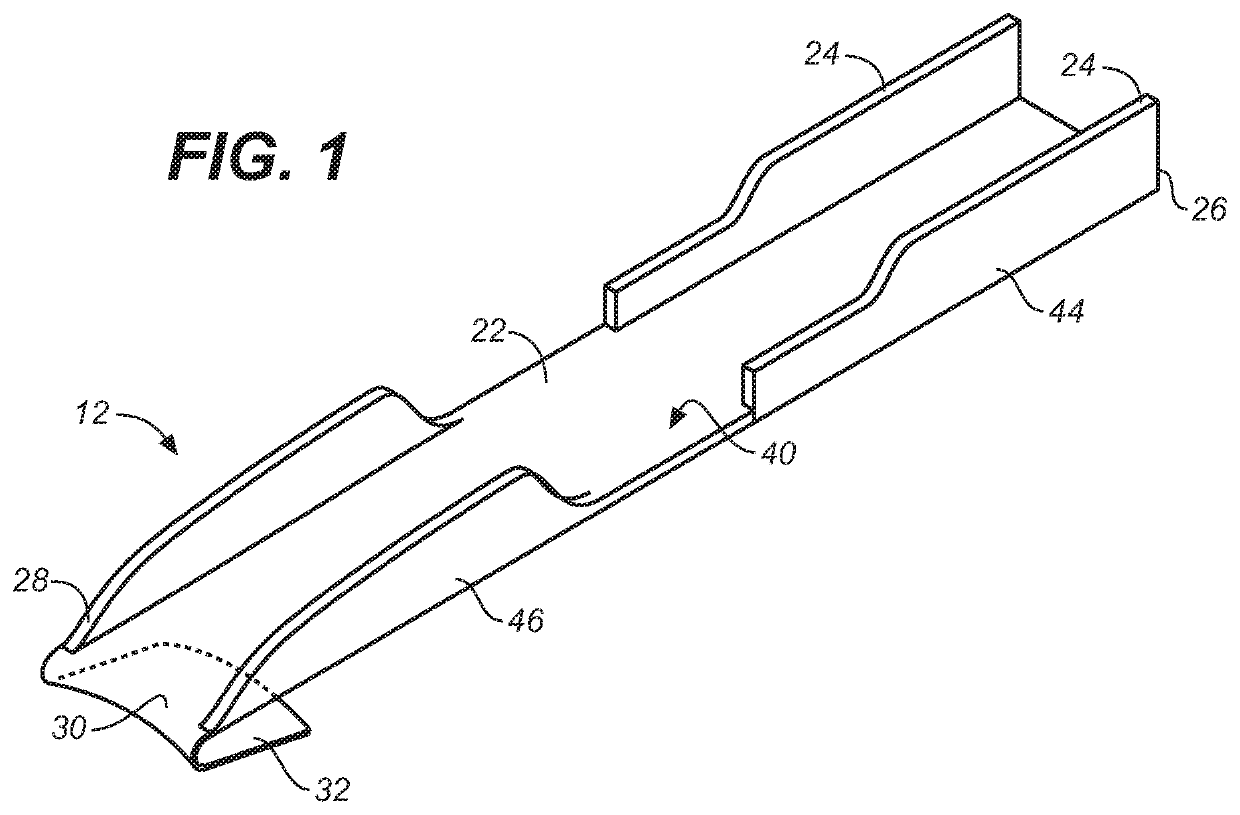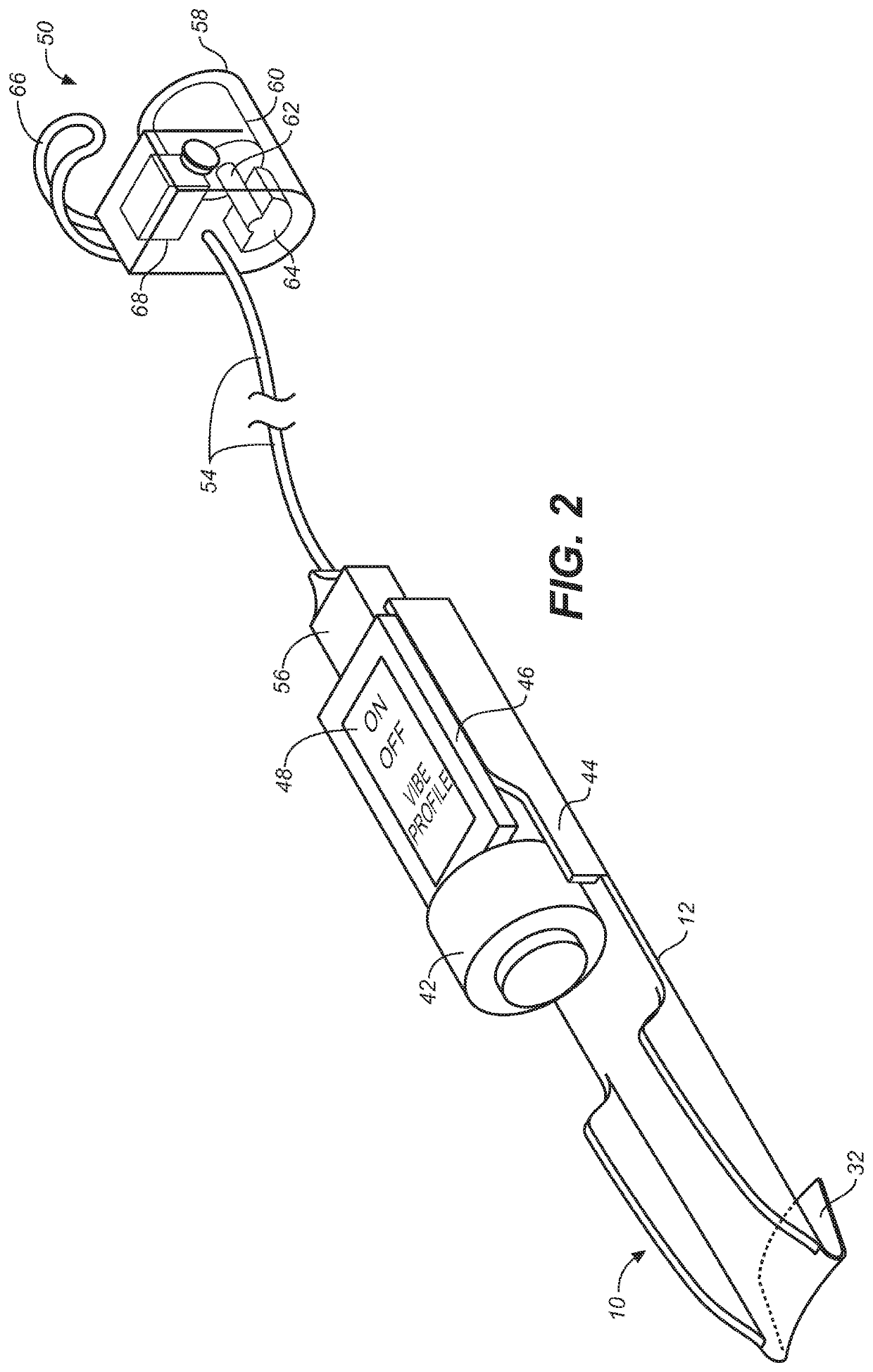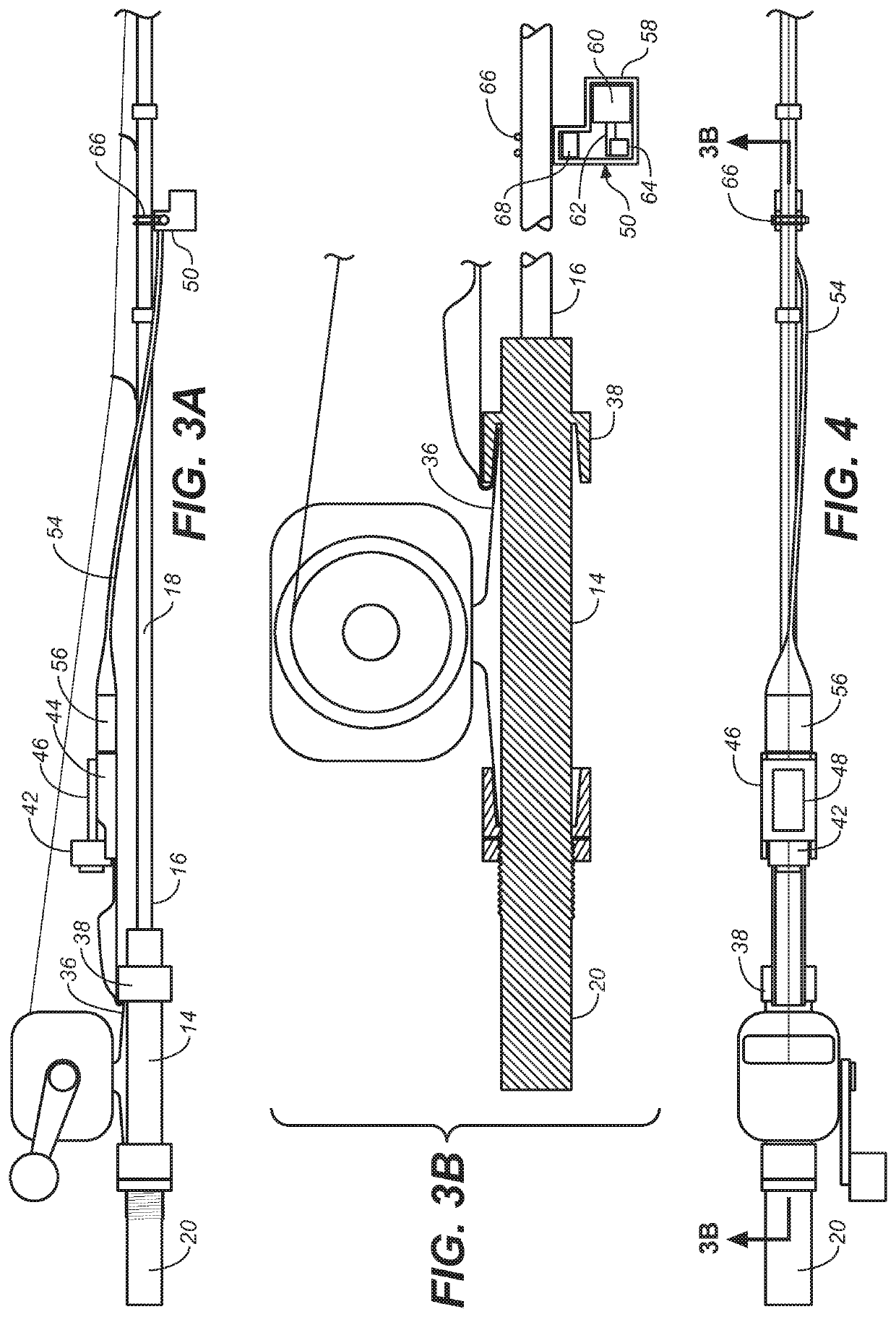Programmable fishing rod vibrator with sensory feedback controller
a technology of a vibrator and a controller, which is applied in the field of programmable electronic fishing rod vibration devices, lure vibrating and jigging devices, and the range of movements that could be applied to lures or baits was far more limited, and the installation of active components in lures itself renders lures both expensive and heavy, so as to enhance the natural human jigging movement, increase the range of lure action, and enhance the effect of finesse rod movements
- Summary
- Abstract
- Description
- Claims
- Application Information
AI Technical Summary
Benefits of technology
Problems solved by technology
Method used
Image
Examples
Embodiment Construction
[0046]Referring to FIGS. 1 through 6, wherein like reference numerals refer to like components in the various views, there is illustrated therein a new and improved fishing rod vibrator and jigging apparatus, generally denominated 10 herein. Looking first at FIG. 1, there is shown a mounting bar 12 which attaches to an upper portion of a reel seat 14 (as described below) where the bottom end 16 of a rod blank 18 couples to a rod handle 20. Any of a number of devices may be mounted on the mounting bar, including a vibration system, but also a flashlight, radio, GPS device, fish attractant dispenser, speaker, and so forth.
[0047]As seen in FIGS. 1-2, in embodiments the mounting bar 12 comprises a U-shaped channel with a generally planar medial platform portion 22 and structurally reinforcing side rails 24 that taper from the distal end 26 to near the proximal end 28 of the mounting bar. Variations in the rail configuration will be understood as within the scope of even this embodiment....
PUM
 Login to View More
Login to View More Abstract
Description
Claims
Application Information
 Login to View More
Login to View More - R&D
- Intellectual Property
- Life Sciences
- Materials
- Tech Scout
- Unparalleled Data Quality
- Higher Quality Content
- 60% Fewer Hallucinations
Browse by: Latest US Patents, China's latest patents, Technical Efficacy Thesaurus, Application Domain, Technology Topic, Popular Technical Reports.
© 2025 PatSnap. All rights reserved.Legal|Privacy policy|Modern Slavery Act Transparency Statement|Sitemap|About US| Contact US: help@patsnap.com



